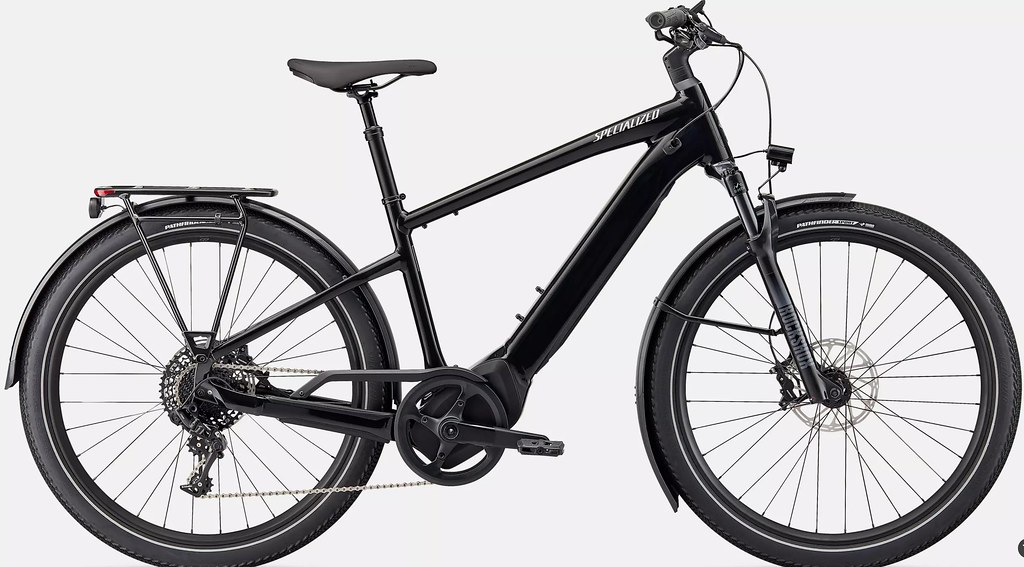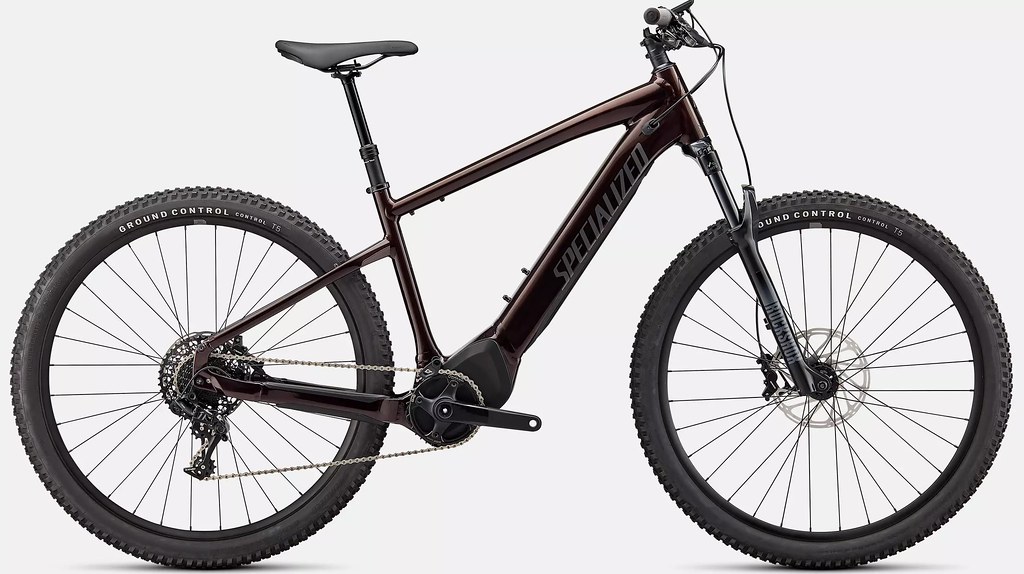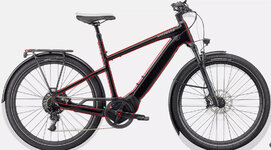Camasonian
Active Member
- Region
- USA
I submit the following two photos from the Specialized web site of the brand new 2022 Turbo Vado 5.0 and 2022 Turbo Tero 5.0 Examine the two bikes with respect to the frames. Do you see any differences?
There are some very subtle differences in the frame measurements that could actually be passed off as rounding error. It looks to me that they are essentially the same bike with different, forks, tires and accessories. I haven't gone through the entire component set, but at first glance they also use the same SRAM componentry.


According to the spec sheets on the web site, the frame measurements are are all identical as follows, as are the motors, forks, and electronics:
2022 Turbo Vado 5.0
Headtube Length 135mm 150mm 165mm 190mm
Chainstay Length 470mm 470mm 470mm 470mm
Seat Tube Length 400mm 450mm 460mm 500mm
Fork Length (full) 480mm 480mm 480mm 480mm
Fork Rake/Offset 44mm 44mm 44mm 44mm
Fork: Rockshox Recon Silver RL, 80mm travel, Motion-Control, fender-mounts
Motor: Specialized 2.2, 90Nm torque, custom tuned motor, 250W nominal
UI/Remote: MasterMind TCD, w/handlebar remote, built-in anti-theft feature, Bluetooth® connectivity, customizable display pages
Battery: Specialized U2-710, alloy casing, state of charge display, 710Wh
2022 Turbo Tero 5.0
Headtube Length 135mm 150mm 165mm 190mm
Chainstay Length 470.4mm 470.4mm 470.4mm 470.4mm
Seat Tube Length 400mm 450mm 460mm 500mm
Fork Length (full) 480mm 480mm 480mm 480mm
Fork Rake/Offset 44mm 44mm 44mm 44mm
Fork Rockshox Recon Silver RL, 110mm travel, Motion-Control
Motor: Specialized 2.2, 90Nm torque, custom tuned motor, 250W nominal
UI/Remote: MasterMind TCD, w/handlebar remote, built-in anti-theft feature, Bluetooth® connectivity, customizable display pages
Battery: Specialized U2-710, alloy casing, state of charge display, 710Wh
Most of the other spec measurements are different, but that could be attributable to the use of different stem, handlebars, and tires, although the both use 650B wheels, the tire dimensions are different. Essentially it looks to me that one should be able to covert a Vado into a Tero simply by swapping out for more aggressive knobby tires and stripping off the racks and fenders. And go in the other direction in reverse by putting rack, fenders, and smooth tires on the Tero. The main difference seems to be the different forks, the Tero has a longer one with more travel so that subtly affects some of the other measurements.
There are some very subtle differences in the frame measurements that could actually be passed off as rounding error. It looks to me that they are essentially the same bike with different, forks, tires and accessories. I haven't gone through the entire component set, but at first glance they also use the same SRAM componentry.


According to the spec sheets on the web site, the frame measurements are are all identical as follows, as are the motors, forks, and electronics:
2022 Turbo Vado 5.0
Headtube Length 135mm 150mm 165mm 190mm
Chainstay Length 470mm 470mm 470mm 470mm
Seat Tube Length 400mm 450mm 460mm 500mm
Fork Length (full) 480mm 480mm 480mm 480mm
Fork Rake/Offset 44mm 44mm 44mm 44mm
Fork: Rockshox Recon Silver RL, 80mm travel, Motion-Control, fender-mounts
Motor: Specialized 2.2, 90Nm torque, custom tuned motor, 250W nominal
UI/Remote: MasterMind TCD, w/handlebar remote, built-in anti-theft feature, Bluetooth® connectivity, customizable display pages
Battery: Specialized U2-710, alloy casing, state of charge display, 710Wh
2022 Turbo Tero 5.0
Headtube Length 135mm 150mm 165mm 190mm
Chainstay Length 470.4mm 470.4mm 470.4mm 470.4mm
Seat Tube Length 400mm 450mm 460mm 500mm
Fork Length (full) 480mm 480mm 480mm 480mm
Fork Rake/Offset 44mm 44mm 44mm 44mm
Fork Rockshox Recon Silver RL, 110mm travel, Motion-Control
Motor: Specialized 2.2, 90Nm torque, custom tuned motor, 250W nominal
UI/Remote: MasterMind TCD, w/handlebar remote, built-in anti-theft feature, Bluetooth® connectivity, customizable display pages
Battery: Specialized U2-710, alloy casing, state of charge display, 710Wh
Most of the other spec measurements are different, but that could be attributable to the use of different stem, handlebars, and tires, although the both use 650B wheels, the tire dimensions are different. Essentially it looks to me that one should be able to covert a Vado into a Tero simply by swapping out for more aggressive knobby tires and stripping off the racks and fenders. And go in the other direction in reverse by putting rack, fenders, and smooth tires on the Tero. The main difference seems to be the different forks, the Tero has a longer one with more travel so that subtly affects some of the other measurements.
Last edited:


